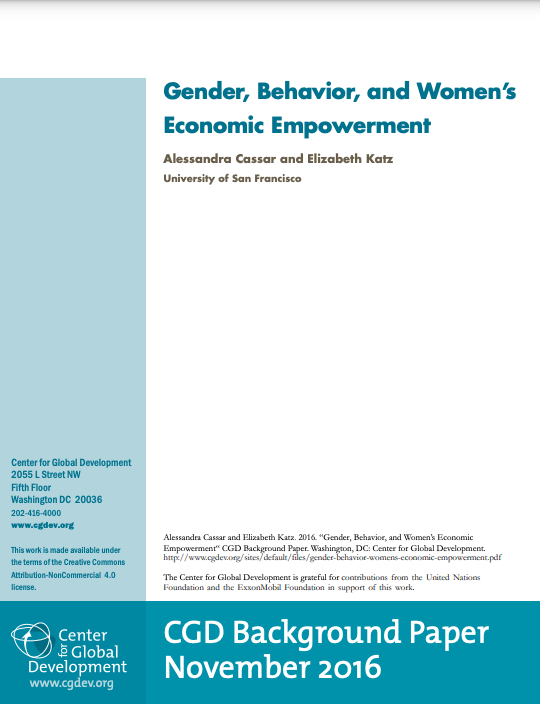Gender, Behavior, and Women’s Economic Empowerment

While the processes of economic development and poverty alleviation can reduce some of the inequalities between men and women that arise when families and communities face extreme resource constraints, growth alone is not enough to guarantee women equal access to health, education, earning opportunities, rights and political participation (Duflo 2012). For this reason, a strong case can be made for policies and programs that seek to address gender-specific constraints to economic empowerment. Many of these constraints are external in nature, for example educational opportunities, access to financial services, and asset ownership. In addition, gender differences in internal constraints—psychological and behavioral preferences rooted in social evolution and cultural norms—may play an important role in shaping the choices that women make with respect to labor market participation, entrepreneurship, technology adoption, and expenditure and consumption patterns. This paper explores the evidence on gender differences in behavior and how program design can best utilize our growing knowledge about the nature of these differences to inform policy going forward.